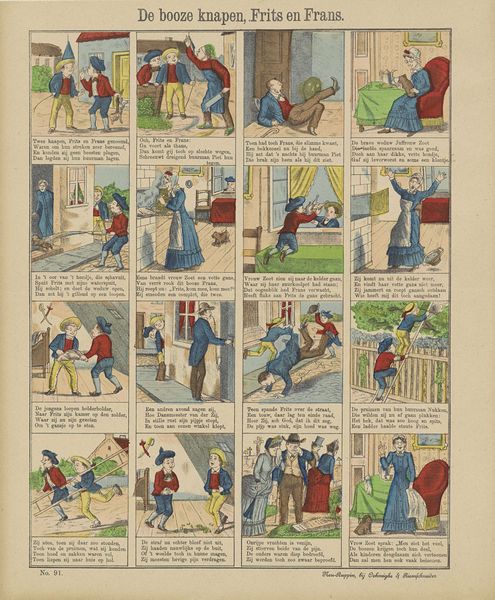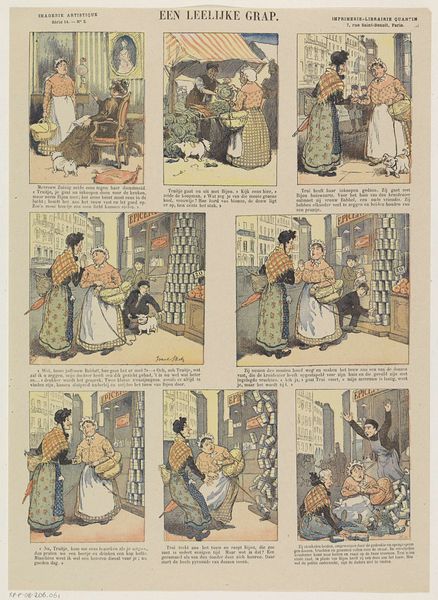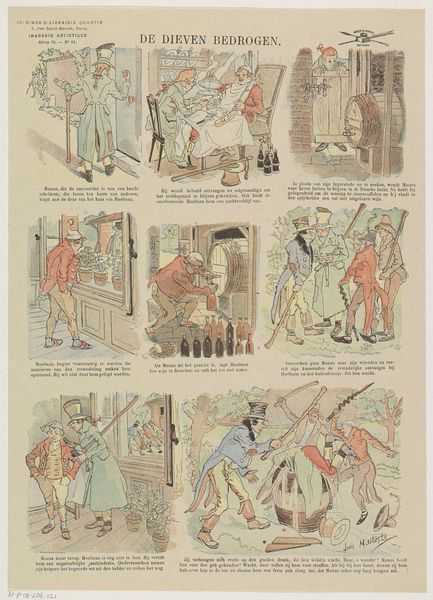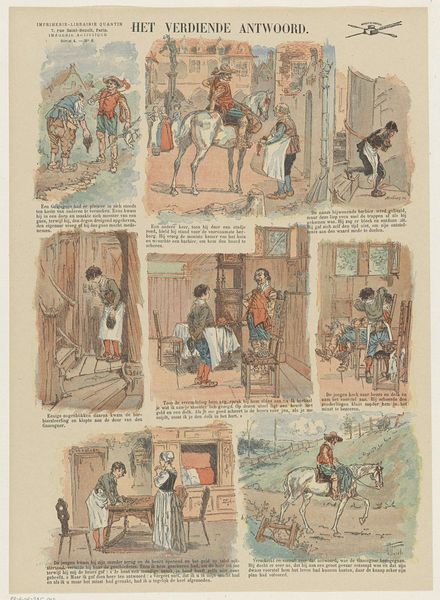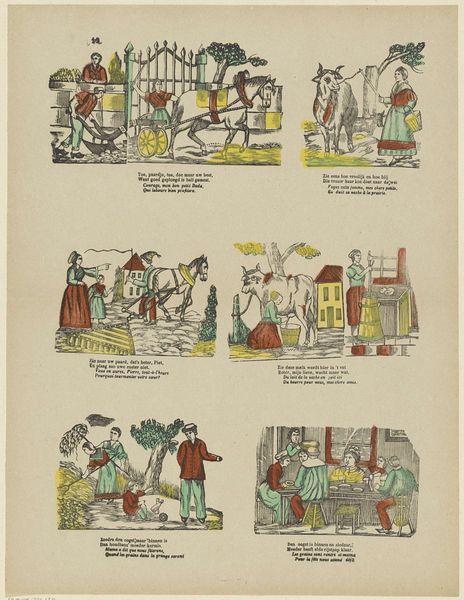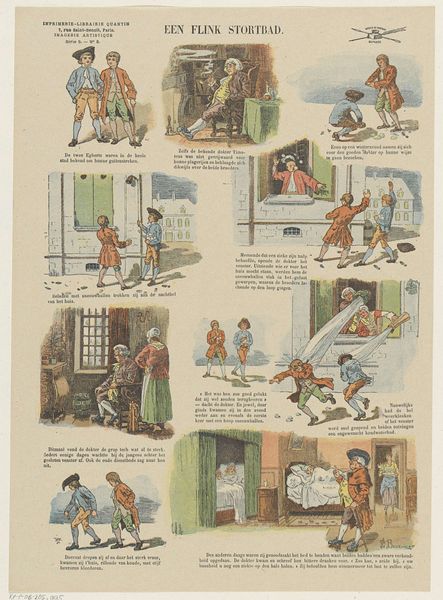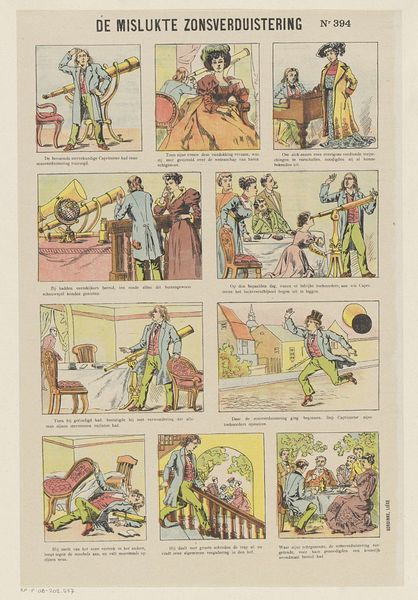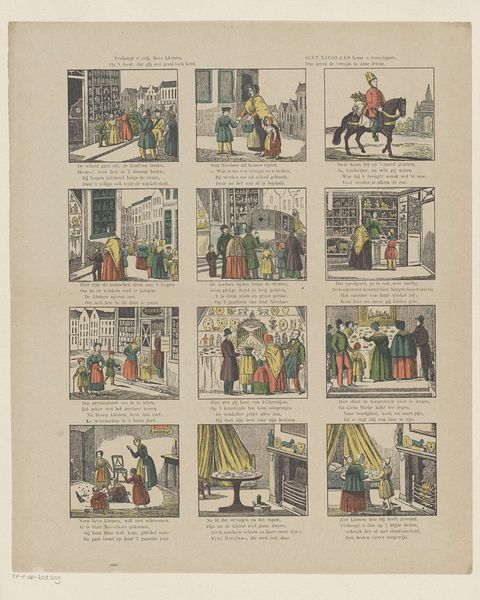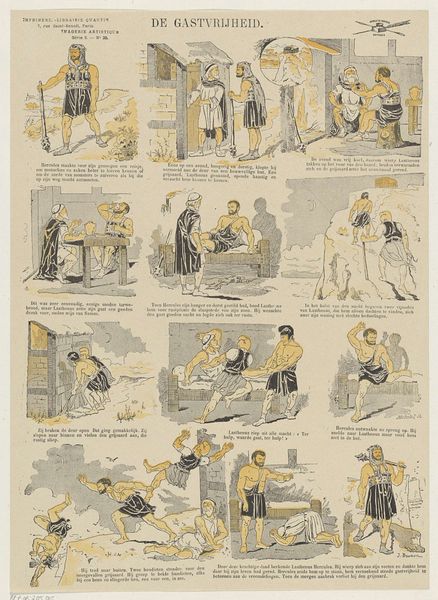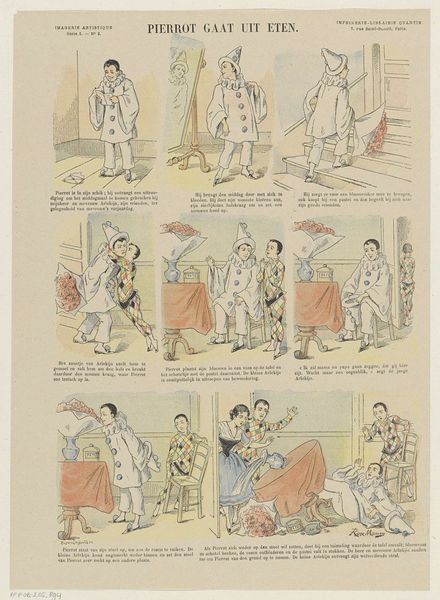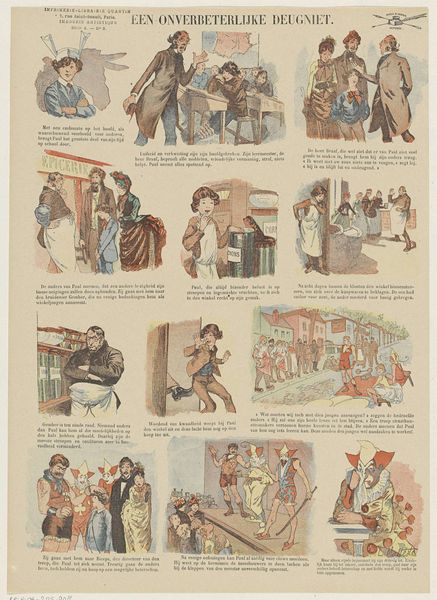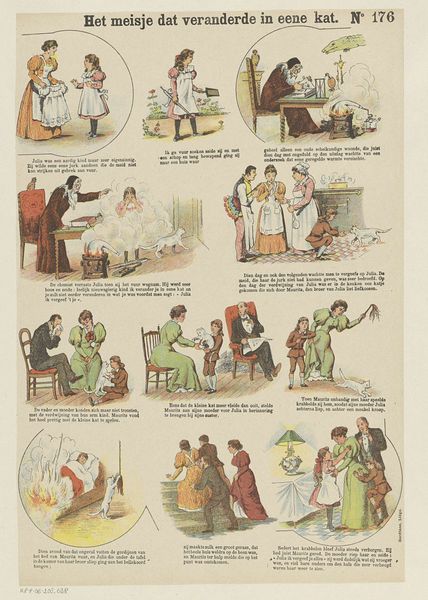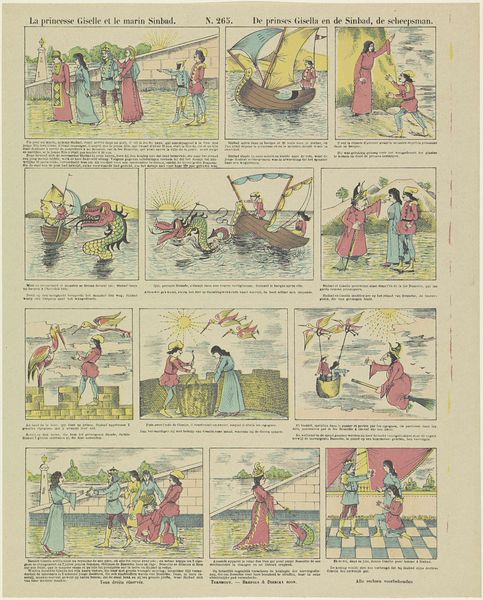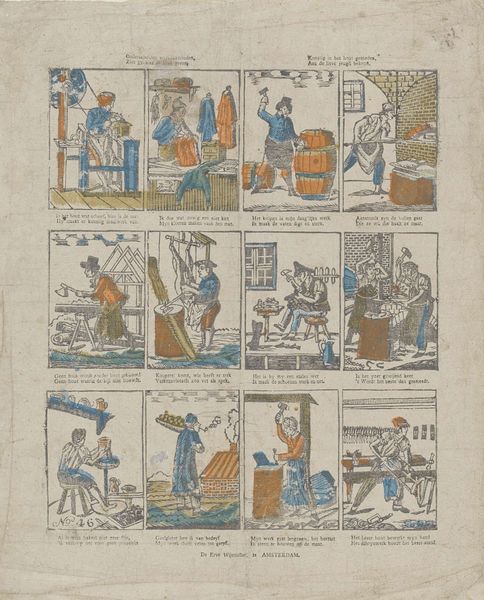
lithograph, print
#
narrative-art
#
lithograph
# print
#
genre-painting
#
history-painting
Dimensions: height 368 mm, width 264 mm
Copyright: Rijks Museum: Open Domain
Editor: Here we have Eugène Chaperon's "Inkwartiering," a lithograph print, likely created between 1876 and 1895. It feels like a comic strip, depicting a narrative across several panels. What do you see in this piece that stands out? Curator: The immediate thing is the tension inherent in its means of production. Lithography, as a printing process, allows for relatively cheap reproduction, widening the audience, in this case for a pointed commentary on military occupation, a literal "Inkwartiering." Who is doing the labor of its creation and distribution, and who can afford to consume it? Editor: That’s an interesting point, thinking about accessibility. I hadn't considered how the lithographic process itself played a role in delivering the social commentary. Curator: Precisely. Notice how the artist painstakingly created multiple scenes, showing the disruptive presence of soldiers in civilian homes, down to upending the contents and furniture, suggesting labor wasted and material comfort lost. How does this commodification, packaging and ultimate consumption reflect both the economics and social dynamics it depicts? Editor: So, it’s almost like Chaperon is using the very nature of mass production to critique the disruptions caused by militarization and class divisions. How effective do you think this kind of visual messaging was at the time? Curator: That's the crucial question. We need to explore distribution networks and readership, the socio-economic realities shaping this interaction between creator and consumer. Did it resonate because of the familiarity of such occupation or fail precisely because such an image was accessible to a wider range of socioeconomic strata? Editor: That definitely gives me a new way to appreciate prints beyond just the image. I'll be paying much closer attention to materials and the process from now on! Curator: Indeed! Analyzing its creation opens so many questions. We learn to see artistic intention meshed with societal forces.
Comments
No comments
Be the first to comment and join the conversation on the ultimate creative platform.
